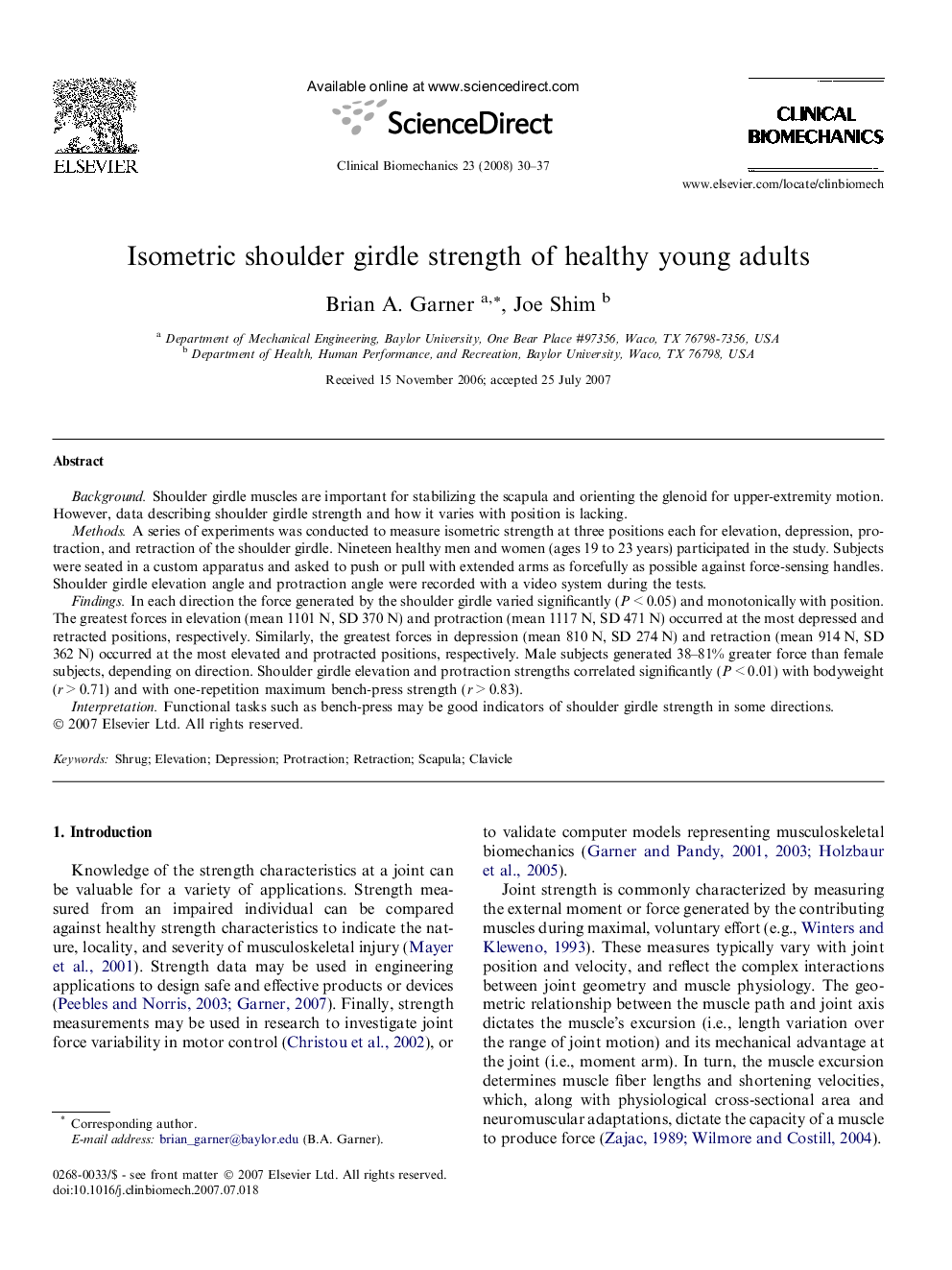| Article ID | Journal | Published Year | Pages | File Type |
|---|---|---|---|---|
| 4051663 | Clinical Biomechanics | 2008 | 8 Pages |
BackgroundShoulder girdle muscles are important for stabilizing the scapula and orienting the glenoid for upper-extremity motion. However, data describing shoulder girdle strength and how it varies with position is lacking.MethodsA series of experiments was conducted to measure isometric strength at three positions each for elevation, depression, protraction, and retraction of the shoulder girdle. Nineteen healthy men and women (ages 19 to 23 years) participated in the study. Subjects were seated in a custom apparatus and asked to push or pull with extended arms as forcefully as possible against force-sensing handles. Shoulder girdle elevation angle and protraction angle were recorded with a video system during the tests.FindingsIn each direction the force generated by the shoulder girdle varied significantly (P < 0.05) and monotonically with position. The greatest forces in elevation (mean 1101 N, SD 370 N) and protraction (mean 1117 N, SD 471 N) occurred at the most depressed and retracted positions, respectively. Similarly, the greatest forces in depression (mean 810 N, SD 274 N) and retraction (mean 914 N, SD 362 N) occurred at the most elevated and protracted positions, respectively. Male subjects generated 38–81% greater force than female subjects, depending on direction. Shoulder girdle elevation and protraction strengths correlated significantly (P < 0.01) with bodyweight (r > 0.71) and with one-repetition maximum bench-press strength (r > 0.83).InterpretationFunctional tasks such as bench-press may be good indicators of shoulder girdle strength in some directions.
